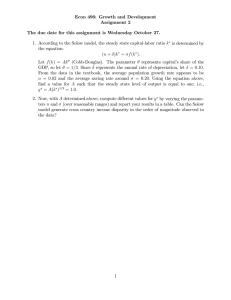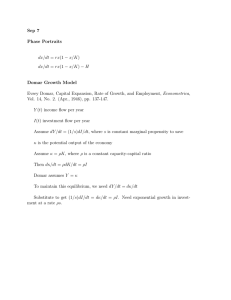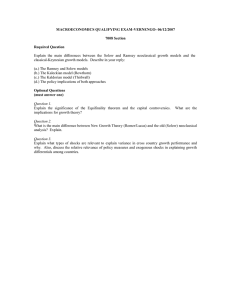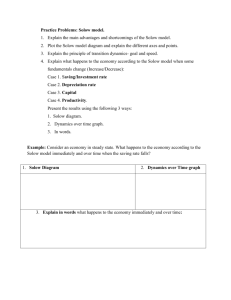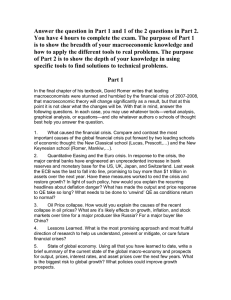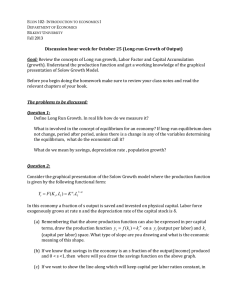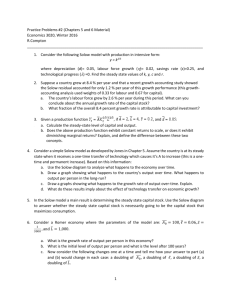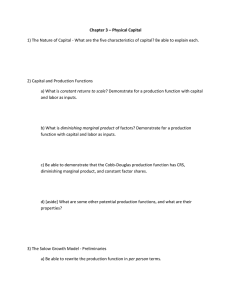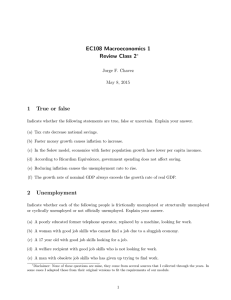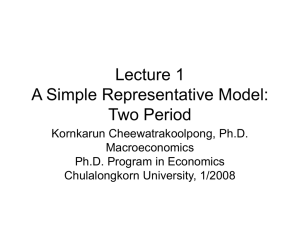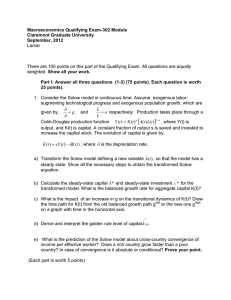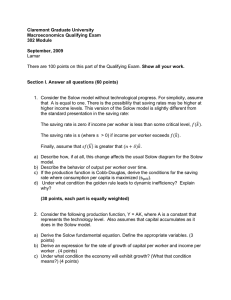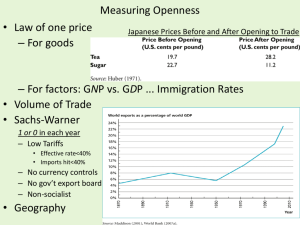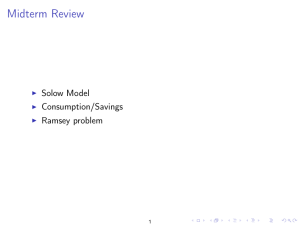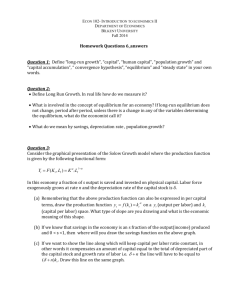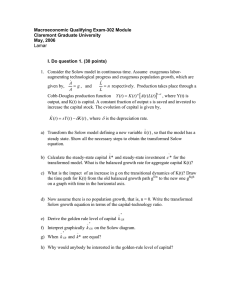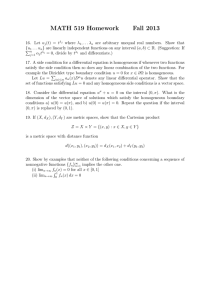Lesson 16. The Solow Growth Model 0 Warm up
advertisement
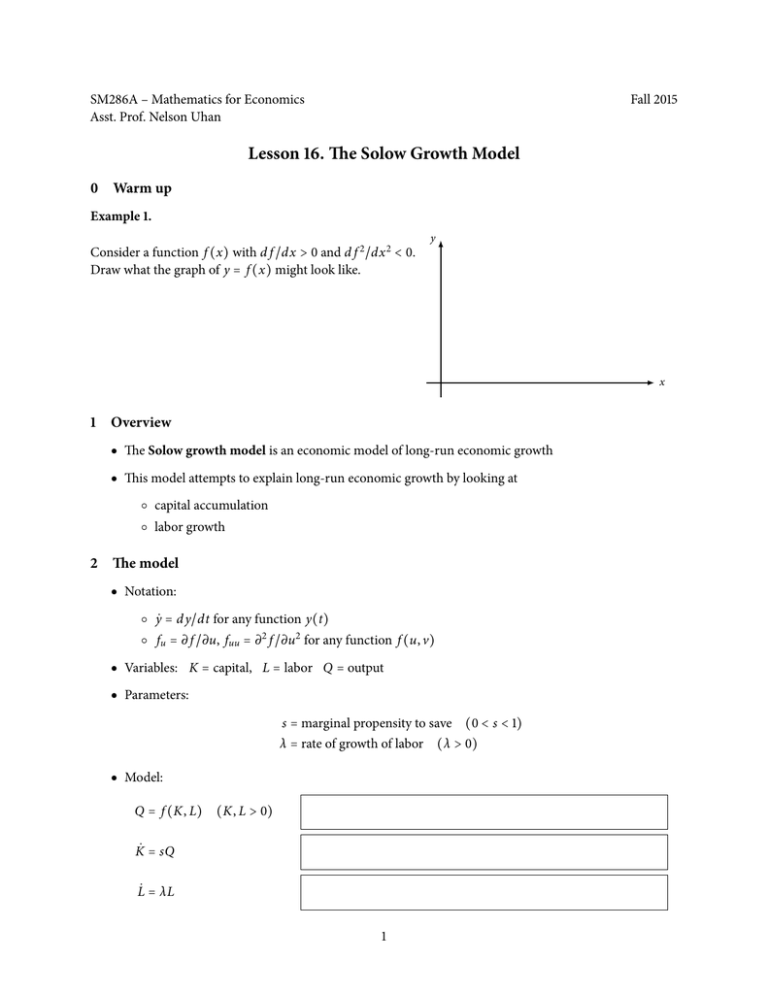
SM286A – Mathematics for Economics Asst. Prof. Nelson Uhan Fall 2015 Lesson 16. The Solow Growth Model 0 Warm up Example 1. y Consider a function f (x) with d f /dx > 0 and d f 2 /dx 2 < 0. Draw what the graph of y = f (x) might look like. x 1 Overview ● The Solow growth model is an economic model of long-run economic growth ● This model attempts to explain long-run economic growth by looking at ○ capital accumulation ○ labor growth 2 The model ● Notation: ○ ẏ = d y/dt for any function y(t) ○ fu = ∂ f /∂u, fuu = ∂2 f /∂u 2 for any function f (u, v) ● Variables: K = capital, L = labor Q = output ● Parameters: s = marginal propensity to save (0 < s < 1) λ = rate of growth of labor (λ > 0) ● Model: Q = f (K, L) (K, L > 0) K̇ = sQ L̇ = λL 1 ● Assumptions: ○ f is homogeneous: f (aK, aL) = a f (K, L) ○ f K > 0, f L > 0: output is increasing in capital and labor ○ f KK < 0, f LL < 0: diminishing marginal output in capital and labor 3 Simplifying the model ● Define ϕ(k) = Q L where k = K L ● It’s not too hard to show that fK > 0 ⇒ dϕ >0 dk and f KK < 0 ⇒ d2ϕ <0 dk 2 ● By combining the definition of ϕ and the model equations, we obtain the differential equation k˙ = sϕ(k) − λk (S) ● This is where we will start our analysis 4 Qualitative analysis ● To draw the phase line of (S), let’s first draw the two individual terms on the RHS: k ● Now let’s use this information to draw the phase line: k˙ k 2 ● So there is an equilibrium k = k¯ that is ● What does this mean economically? ¯ we have k˙ = 0, or in words: ○ At k = k, ○ Therefore, in the long run, capital must grow at the same rate as labor ¯ we have also that ○ Recall that we defined ϕ(k) = Q/L. So, at k = k, ¯ Q = Lϕ( k) ○ Therefore, in the long run, output must also grow at the same rate as labor 5 Quantitative analysis Example 2. Suppose the production function in the Solow growth model is f (K, L) = K 3/4 L1/4 . a. b. c. d. Show that f is homogeneous: f (aK, aL) = a f (K, L). Find ϕ(k). Write the differential equation (S). Solve the equation for k. Hint. It is a Bernoulli equation! What does k converge to as t → ∞? 3

